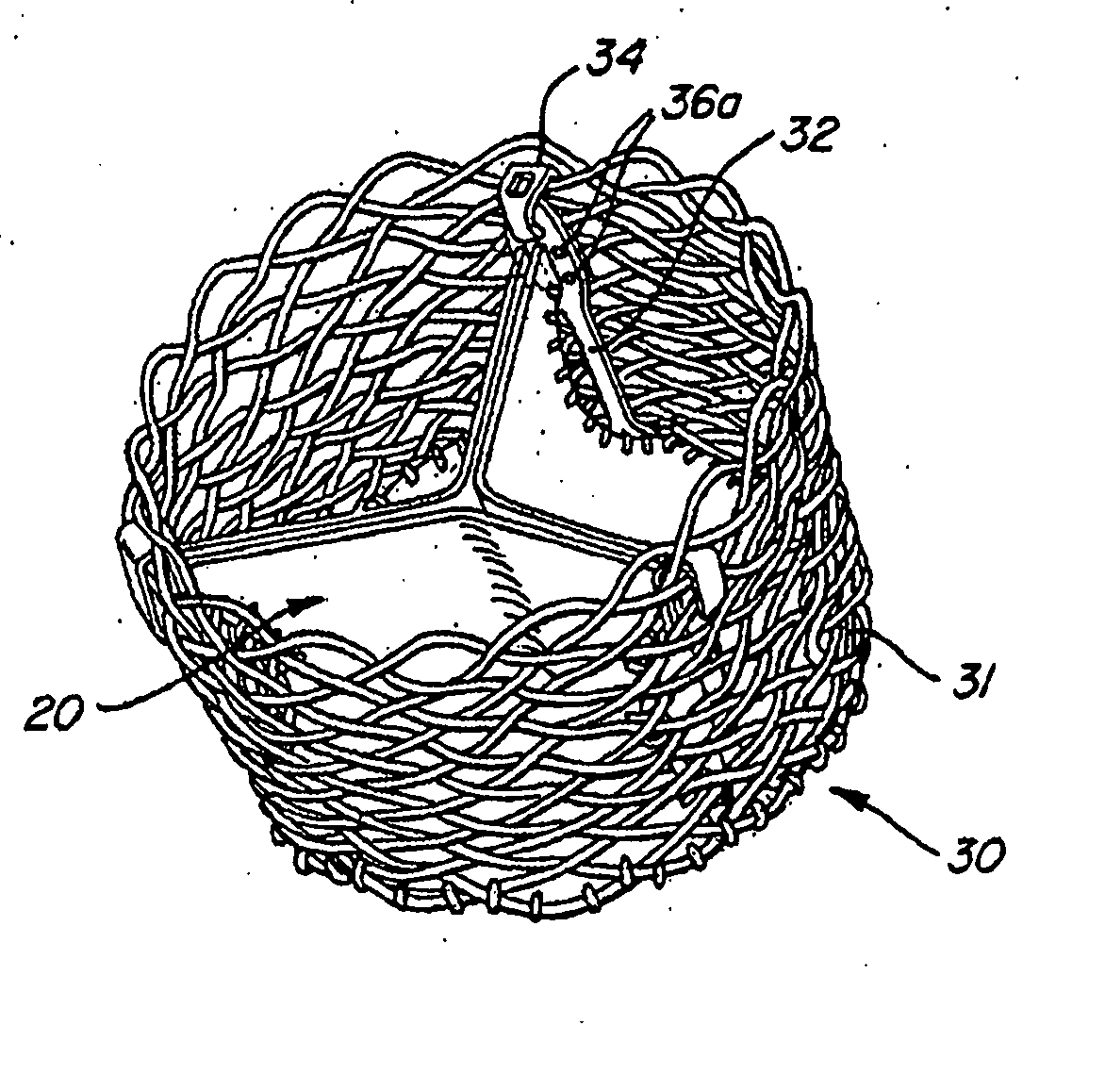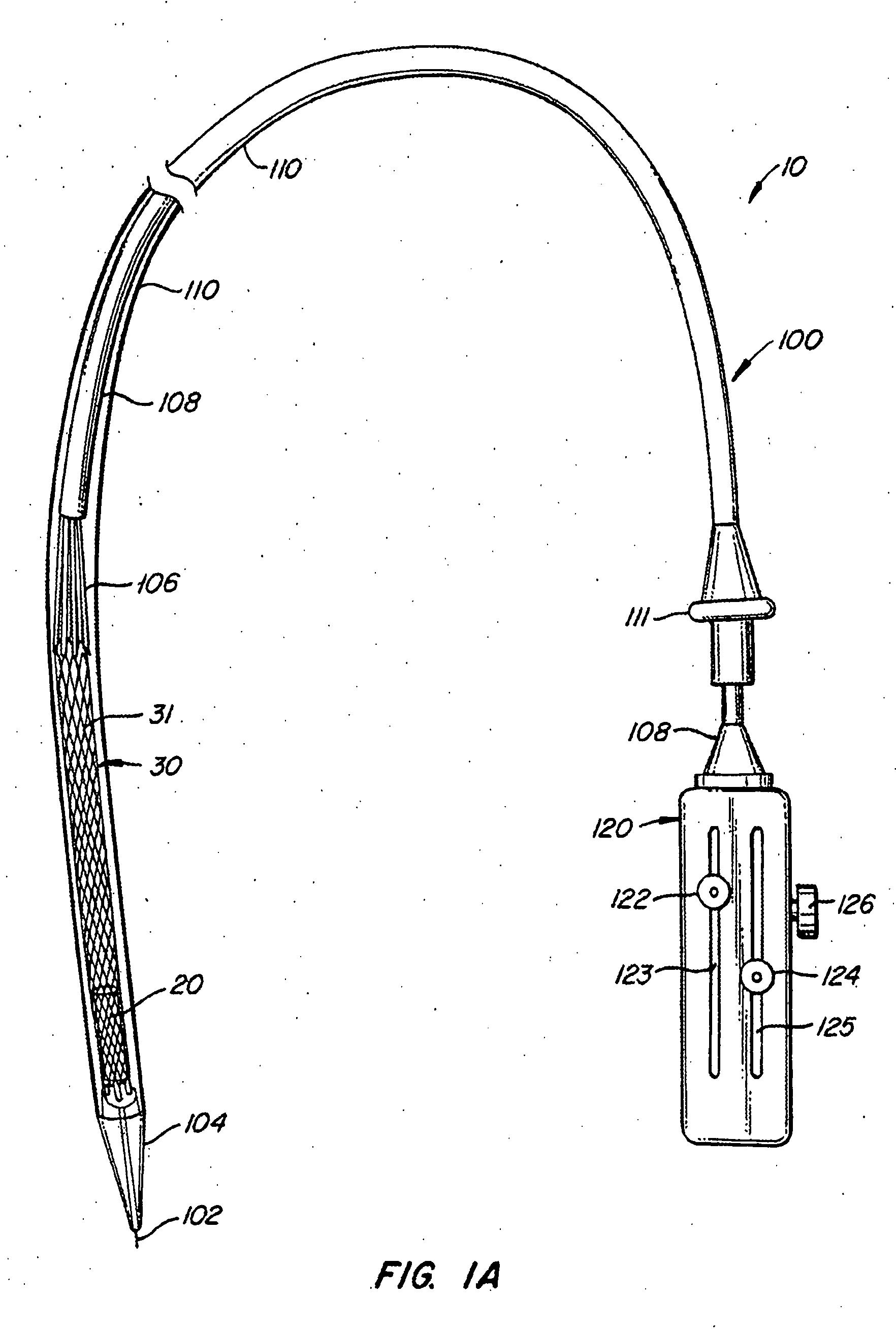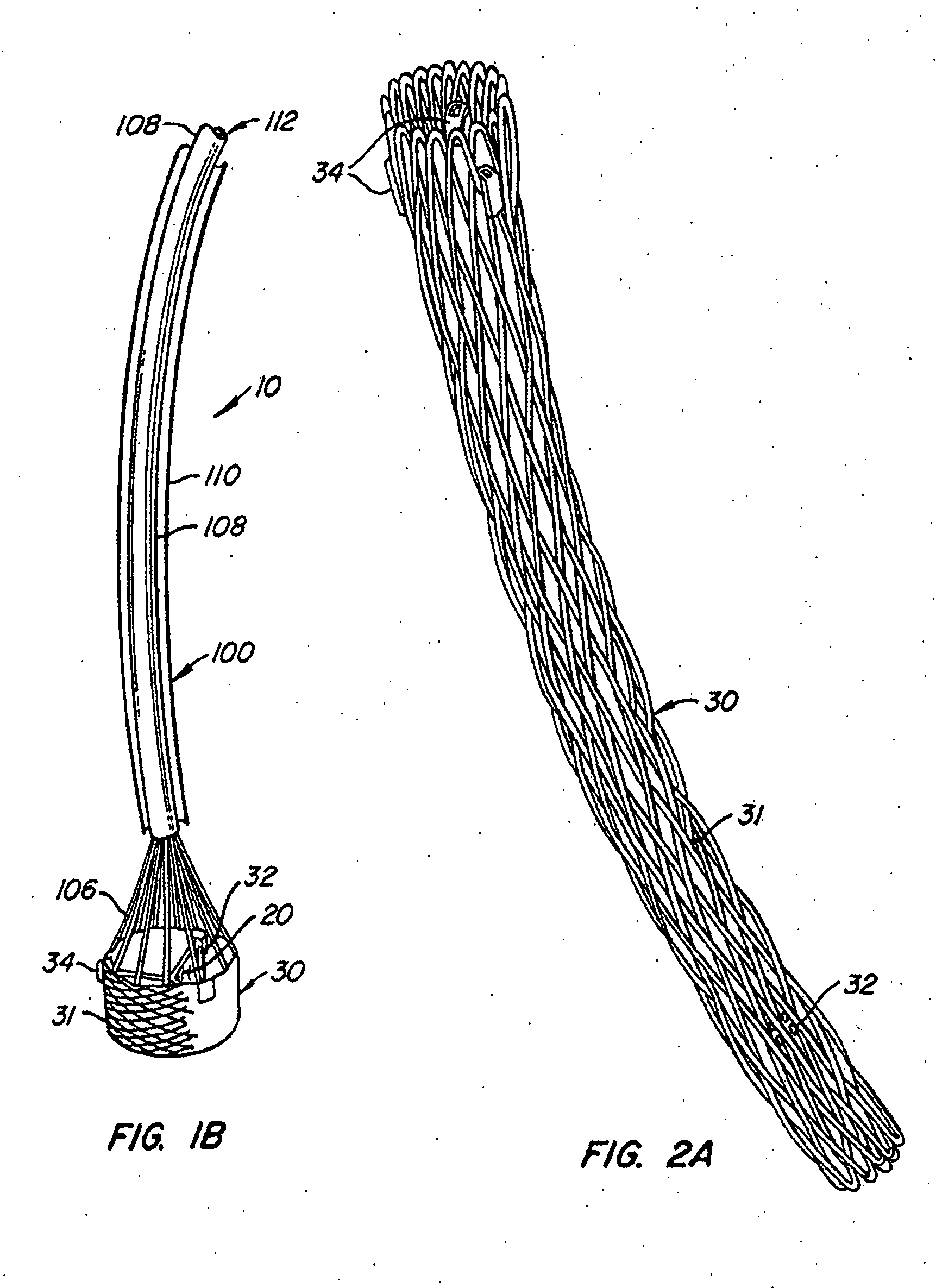Methods and apparatus for endovascularly replacing a patient's heart valve
a heart valve and endovascular technology, applied in the field of methods and apparatus for endovascularly replacing a patient's heart valve, can solve the problems of heart failure, stroke, heart attack, adverse reactions to anesthesia medications,
- Summary
- Abstract
- Description
- Claims
- Application Information
AI Technical Summary
Problems solved by technology
Method used
Image
Examples
Embodiment Construction
[0029] The present invention relates to a delivery system, apparatus and methods for endovascularly delivering and deploying an aortic prosthesis within a patient's native heart valve, referred to here out as replacing a patients heart valve. The delivery system includes a sheath assembly and a guide wire for placing the apparatus endovascularly within a patient and a user control allowing manipulation of the aortic prosthesis. The apparatus includes an anchor and a replacement valve. The anchor includes an expandable braid. In preferred embodiments, the expandable braid includes closed edges. The replacement valve is adapted to be secured within the anchor, and as such, be delivered endovascularly to patient's heart to replace the patient's native heart valve. More preferably, the apparatus and methods of the present invention contemplate the replacement of a patient's aortic valve.
[0030]FIGS. 11A and 11B illustrate one embodiment of a delivery system and apparatus in accordance w...
PUM
 Login to View More
Login to View More Abstract
Description
Claims
Application Information
 Login to View More
Login to View More - R&D
- Intellectual Property
- Life Sciences
- Materials
- Tech Scout
- Unparalleled Data Quality
- Higher Quality Content
- 60% Fewer Hallucinations
Browse by: Latest US Patents, China's latest patents, Technical Efficacy Thesaurus, Application Domain, Technology Topic, Popular Technical Reports.
© 2025 PatSnap. All rights reserved.Legal|Privacy policy|Modern Slavery Act Transparency Statement|Sitemap|About US| Contact US: help@patsnap.com



